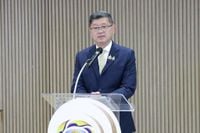Thailand's public debt management remains stable, according to Mr. Phachara Anuntasin, the Director-General of the Public Debt Management Office (PDMO). He stated that the country's fiscal position is solid and that there is currently no need to raise the public debt ceiling. The projections indicate that the Gross Domestic Product (GDP) will grow by 3% in 2025, while the public debt-to-GDP ratio is expected to be 65.5% by the end of the fiscal year 2025. This figure is anticipated to rise to a maximum of 67.3% in 2026, even in scenarios where GDP growth hovers around 2% that year.
Mr. Phachara emphasized that even if economic growth falls short of expectations, the public debt ratio will remain within safe limits, not exceeding 70% of GDP. He noted, "Even if the model shows a lower-than-expected economic expansion, the public debt ratio will still be within the ceiling of 70% of GDP, unless the government implements policies to stimulate the economy through investment." This indicates that while the government is prepared to consider adjustments to the debt ceiling if necessary, it currently feels confident about the fiscal outlook.
In terms of fiscal flexibility, the PDMO director mentioned that there is still room for borrowing, with an additional 4 billion baht available from the deficit financing plan of 865 billion baht for the fiscal year 2025. He reassured that historically, revenue collection has not significantly fallen below targets, which would have raised alarms regarding public finances.
In a related discussion, Mr. Phachara also addressed the challenges facing the Revenue Department (RD). He acknowledged that while the tax base shows stability, it lacks comprehensiveness and sufficient revenue generation. Improvements have been noted due to economic stimulus measures, yet more robust tax collection mechanisms are necessary to align with overall economic plans.
For the fiscal year 2026, the RD forecasts an increase in the tax-to-GDP ratio to 67.3%, with aspirations to reach 68% by the end of that year. However, Mr. Phachara cautioned that achieving these targets requires a more comprehensive economic picture and better coverage of the tax base, which currently remains below 70% of GDP.
Interestingly, Mr. Phachara pointed out that if the government finds it necessary to expand the debt ceiling to 75-80% to manage economic challenges, it can do so under emergency provisions. He stated, "If the government needs to expand the debt ceiling, it should be based on clear reasons and should not affect the country's credibility, as Thailand maintains a strong fiscal position and high foreign reserves." He added that there is considerable interest from foreign investors in Asian markets, which could further bolster Thailand's economic standing.
Currently, Thailand's public debt stands at approximately 12.1 trillion baht, accounting for 64.21% of GDP. By the end of this fiscal year, projections suggest this will rise to 65.5%, and next year it could reach 67.3%. Mr. Phachara noted that potential impacts from U.S. tax policies could slow down exports, which in turn might affect government revenue collection. Despite these concerns, he remains optimistic that revenue will not drop below expectations, as the government has successfully navigated similar challenges during the COVID-19 pandemic.
In conclusion, while the PDMO is prepared to adjust fiscal strategies if necessary, there is currently no urgency to increase the public debt ceiling. The focus remains on ensuring that economic growth is sustained and that the tax base is expanded to support future fiscal stability. Mr. Phachara's statements reflect a cautious but confident approach to managing Thailand's public finances in a challenging global economic environment.






